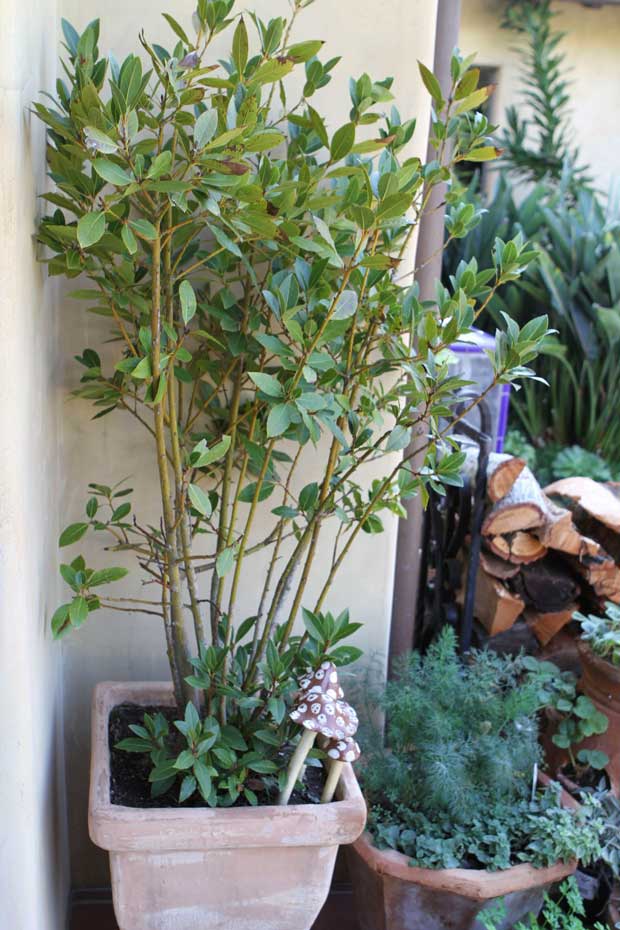December 14, 2011

Fresh laurel leaves (also called bay leaves) wind up all the time in my kitchen cauldrons—please excuse the wizardry talk, but that’s what happens when you share a home with a Harry Potter-obsessed eight-year-old. Whenever there’s a simmering pot of soup or stew (or a braise or tagine) I toss in a couple of these ancient symbols of victory. Fresh laurel leaves are milder in flavor than dried, and I really prefer them for their clean and gentle seasoning. I also like that they don’t crack and break up during cooking—who wants to be fishing around for stray pieces in your beef bourguignon? When using fresh laurel leaves, double the number of called-for dried leaves.
Months ago I began a search for ready-to-deliver laurel plants; I wanted to give them to my mom and my sisters for Christmas but all my searching produced nothing.
So I decided to get some dirt under my nails and plant a few myself. I ordered the plants online and also tracked down some pretty containers. I stuck them in some potting soil and scattered some pea gravel on top of the soil for a more finished look. A simple, natural, pretty gift (promise to look surprised, Mom!) that any cook would appreciate.
A few years ago I was given a wreath like this one; it still hangs in my pantry and I pluck from it often. The chiles and the laurel succumbed to my cooking first—I don’t use dried herbs (a perk of living in Santa Barbara: fresh garden herbs year-round). And even though the wreath is missing some elements, it still looks good. If you have a fear of commitment with potted plants, this is an easy way to enjoy fresh laurel leaves in your cooking.